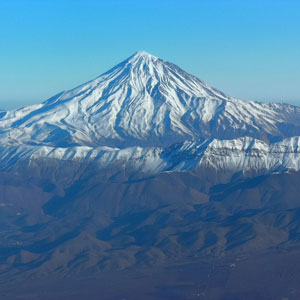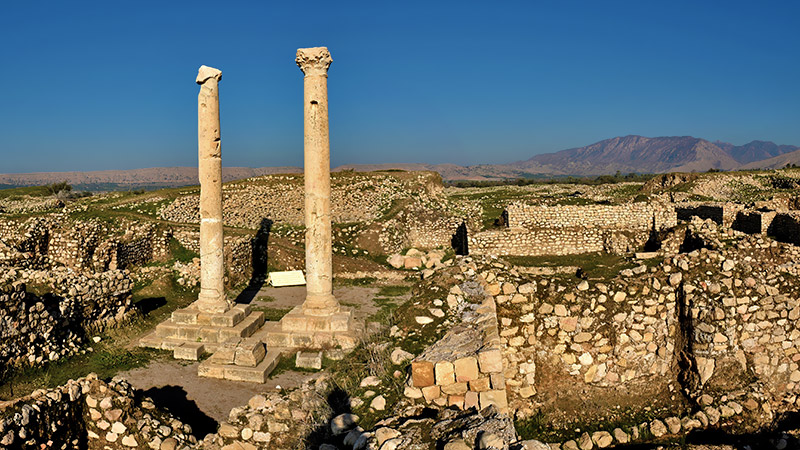 Signin with Google
Signin with Google Signin with Facebook
Signin with Facebook


 Places,Culture,History,Nature
Places,Culture,History,NatureSassanian Archaeological Landscape , a Panorama of a Kingdom

Welcome to the original homeland of Persia. A region where one of the world's leading powers once ruled over a realm spreading from the doorstep of Europe to the threshold of China. The Fars Province, located in Central Iran, was during 400 years home to the Sassanian dynasty, the last kingdom of the Persian Empire before Islam. This era testified of the climax of Iranian civilization and by far the Sassanian Empire is the one that left the most glorious legacy. Inspiring even the legendary "Shahnameh" by the Persian poet Ferdowsi, the Sassanian dynasty has truly shaped the Iranian identity.

Eight invaluable archaeological sites
Caught between the high summits of the Zagros Mountains Range, this vast region has been chosen by the first Sassanian king, Ardashir I who considered him as a descendant and his monarchy the follower of great Achaemenid emperors, to establish the capital of his dynasty. The "King of the Kings" and after him, his son, the prince crown Shapur I, have left many palaces, fortified structures, innovative cities, and striking rock reliefs to recall the glory of their reign. No less than eight sites, on three different areas of this historical land, have been recognized by UNESCO as World Heritage under the name of "Sassanid Archaeological Landscape of Fars Region". It underlines the significance of Sassanian architecture, its innovative aspects, and its long-lasting influence.

The glorious city of Bishapur
The remains of the vast city of Bishapur is one of the highlights of the region, standing by the ancient king's road. Under Shapur the Great's reign, between 241 and 272 of our era, the royal city was one of the biggest in the Persian Empire. This magnificent capital was ordered by Ardashir's son, in order to honour his triumph over his most fierce rival: the Roman emperor Valerian. It is believed that Romans prisoners have been built it. Be that as it may, the remains of the glorious city indeed display a unique blend of Persian and Roman architectural designs, along with the Sassanian genius engineering.

The last Zoroastrians kings of Persia
The stunning Anahita temple, well-preserved in the heart of the palatial complex of Bishapur, reminds us that the Sassanian kings were Zoroastrian believers. This ancient faith, one of the world's oldest monotheist religions to remain active, was central in ancient Persia. The Anahita temple, dedicated to the Goddess of water, is a striking example of the religious fervour of Persian emperors, before the Muslim conquest of Persia. The first Sassanian king was particularly devoted to the Goddess Anahita, to whom his own grandfather was a prominent priest. Other temples can thus be found in the Sarvestan palace, as well as Ardashir's city (Gur) and palace, without mentioning the dedicated castle of Qal'eh Dokhtar.

Visiting the imperial throne in the Palace of Ardashir
Indeed, Ardashir has also created some of the greatest monuments of the Sassanian dynasty. The palace named after him came out of the ground more than 1800 years ago, and thus, is one of the earliest examples of Sassanian designs, integrating local materials and know-how. Lavishly ornamented, the Palace of Ardashir welcomed prestigious guests from all over the region, who came here to pay homage to the imperial throne. Centuries later, its remains have fascinated the British writer and world traveller Robert Byron, as well as the French archaeologist and explorer Jane Dieulafoy, as it continues to express today the greatness of the Sassanian empire.

Ardashir's perfectly concentric city
Built during the same period, the three-tiered palace of Qal'eh Dokhtar is another example of the recurrent features of this type of architecture, which later influenced Islamic architecture in Iran. But Ardashir's masterpiece is its city, Ardashir Kurreh or Shahr-e Gur, the most important monument in Firuzabad Plain: A perfectly concentric city enclosed by fortifications and divided into twenty sectors according to a precise geometric plan. The royal power, held at the centre of the city, symbolized the strong centralized government wanted by Ardashir. Remains of Takht-e Neshin, a cubical stone tower, nowadays still standing proudly at the centre of Ardashir's city.

Carving history into the rocks
The Sassanian kings have left behind them many rock reliefs, as Ardashir was actually the first Persian ruler to establish the tradition of rock carving spread over Iran. After him, the greatest kings of Persia have exhibited their achievements on impressive stone carvings, recalling throughout history their military conquests as well as displaying their greatness. In Firuzabad, two massive rock reliefs relate the victories and investiture of the first Sassanian king Ardashir, not far away from his son's own rock reliefs displayed in Tang-e Chogan valley. But this latter has created another gem out of rocks, hidden in what is known as "Shapur cave": Overlooking the valley is an impressive seven meters high statue of the Shapur the Great, carved from only a single limestone block. As if the great sovereign was still looking, for eternity, after what was once one of the world's kingdoms.
